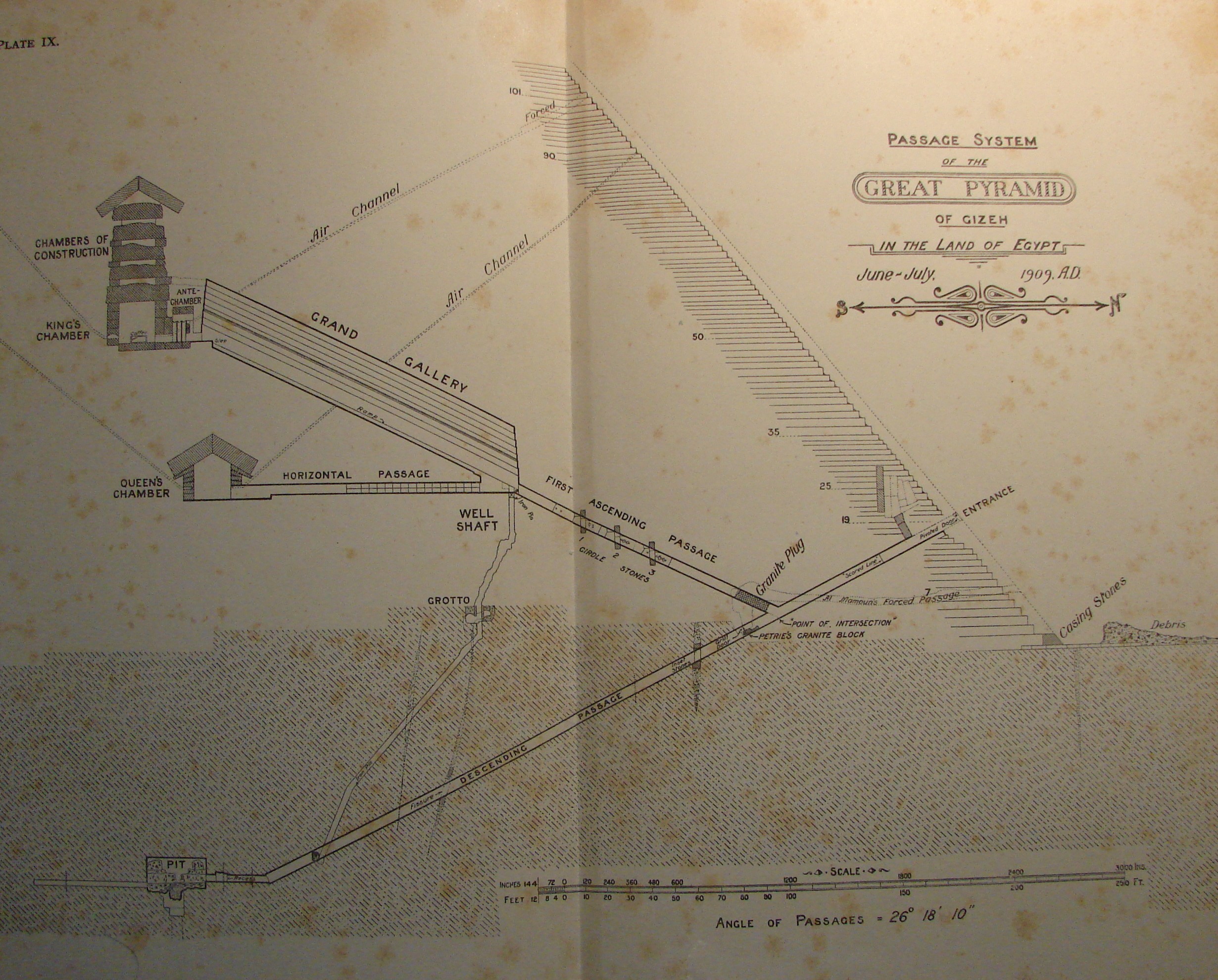Foreword
Section 3.1.1
Since the pyramid has been build approx. 4500 years ago, it has been exposed by earth quakes, intruders, vandalism and thieves. Therefore I had to distinguish between real measurements (marked with "RM") and intended nominal measures (marked with "NM"). If nothing is stated, then the measurement is calculated. The nominal measures are my best estimates, so if they are not accurate of some reason, I apologize. In that case please do not hesitate to let me know.
If a distance is measured from a specific drawing, it is marked "DM".Coordinates are shown as for example 3541;2658 as it is the easiest way and it does not require so much space in the drawings. The correct way would have been (3541;2658). The coordinates refer to the nominal size of the pyramid 440 cubits long x 280 cubits high magnified by x 10 to make the resolution of the drawings better, which makes the coordinate of the North point where the casing hit the pavement at 4400,2800.
The accuracy of the measurements are different depended on the environment, but so far I have not seen an accuracy worse than +/- 0,9", which is +/- 0,04 cubits or +/- 2,3 cm.
In the drawings I reject all measures which differ more than 1 pixel = 0,1 cubits = 5,24 cm.
The azimuths have been measured, but I have to admit I am not convinced about the possible bias, so I have chosen to ignore the measurements. Instead I assume all passageways are parallel to N-S sides of the pyramid.
An old drawing of the internal passages
Please see the picture of the drawing made by Edgar in 1909, I apologize for the poor quality of the picture but the book is quite old.
Please observe the drawing is twisted when the picture was taken, but it
gives a good overview of passages, chambers and even fissures, stones (and
different recent added equipment as iron pins, grill door etc.)
The plate gives you a rough idea how the known part of the pyramid is constructed.
Source: The Great Pyramid Passages And Chambers Volume 1 by John And Morton Edgar, 1910.
